Chief Complaint: 65-year-old male with complaints of painless, gradual loss of vision OS.
History of Present Illness: Patient complained of a painless, gradual loss of vision OS over several months. He saw an eye doctor and was diagnosed with angle closure glaucoma. He was sent to the U of Iowa for evaluation, treatment, and possible laser peripheral iridotomy (LPI).
PMH: healthy, no medications, and no FH of glaucoma.
Exam:
Gonioscopy: moderately open angles OU. Not occludable OU. (+) Sampaolesi's line OS.
| Pigmented Sampaolesi's line OS (arrow) | Corneal wedge (arrow) denoting location of Schwalbe's line (*) |
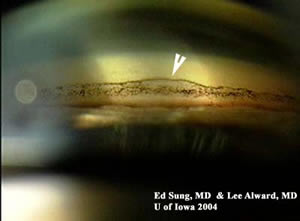 |
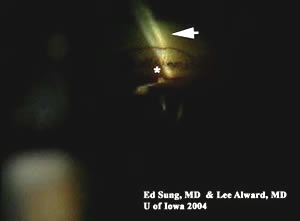 |
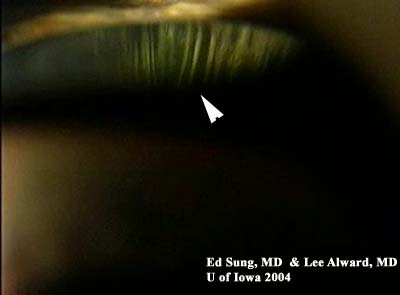 |
| GVF OS with severe VF loss | GVF OD - Full Field |
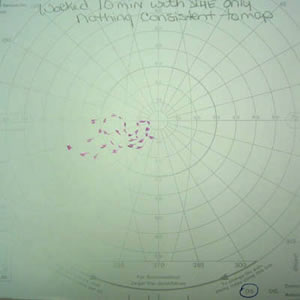 |
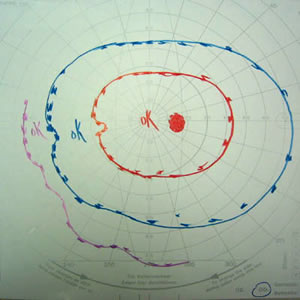 |
| Slit Lamp OS: moderate injection, no cells seen in anterior chamber | Slit Lamp OS: moderate corneal edema, and moderately deep anterior chamber |
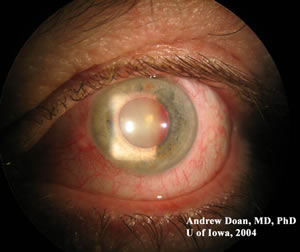 |
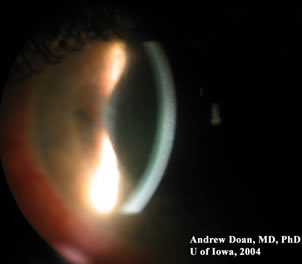 |
| A. Slit Lamp OS: undilated pupil exam notable for white, fluffy material around pupil margin. | B. Slit Lamp OS: dilated exam notable for ground glass appearance of anterior lens capsule |
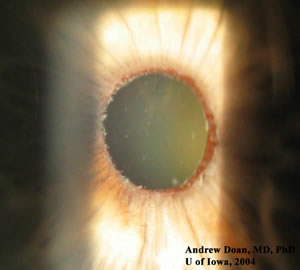 |
 |
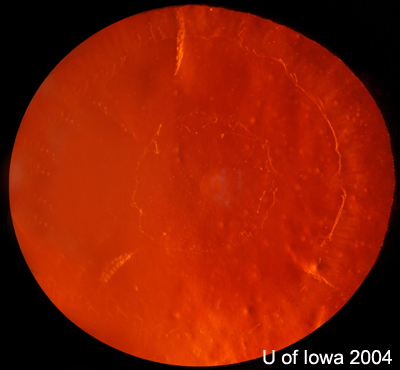 |
| Right Optic Nerve: normal | Left Optic Nerve: almost complete cup |
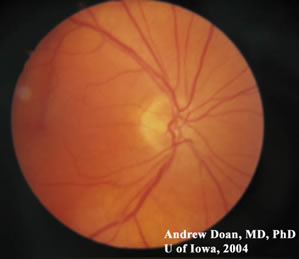 |
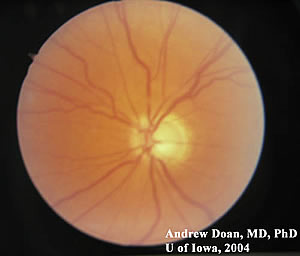 |
This patient presented with unilateral advanced pseudoexfoliation glaucoma OS (a form of open-angle glaucoma), which is a systemic disease with the eye being the most affected organ. This patient presented with gradual painless loss of vision with a pressure of over 70 mmHg OS. Because the pressure rise OS was gradual, patients may not experience pain and severe cornea edema that is seen with sudden angle closure glaucoma. The angle in this patient was moderately open. Pseudoexfoliation glaucoma can present as a unilateral glaucoma with extremely high IOP. The white, fluffy material deposited on the pupil margin, lens capsule, and angle (Sampaolesi's line) is pseudoexfoliation material. This same material is also deposited in other parts of the body, e.g. the kidney. This patient was treated with topical anti-glaucoma medications and the IOP was controlled in the 30s OS. The visual potential OS was low with only a remnant of vision in the temporal field, and the patient wanted topical medications before considering cyclodestruction of the ciliary body. Because of the low visual potential OS, filtration surgery is not the best option and may place the other eye at risk for sympathetic ophthalmia.
True exfoliation syndrome from exposure to extreme heat (glass blowing) and infrared radiation is rare and is not associated with glaucoma.
EPIDEMIOLOGY
|
SIGNS
|
SYMPTOMS
|
TREATMENT
|
Doan A, Kwon YH: Verticillata: Pseudoexfoliation Glaucoma: 65-year-old male with complaints of painless, gradual loss of vision OS. February 21, 2005; Available from: http://www.EyeRounds.org/cases/case8.htm.

Ophthalmic Atlas Images by EyeRounds.org, The University of Iowa are licensed under a Creative Commons Attribution-NonCommercial-NoDerivs 3.0 Unported License.